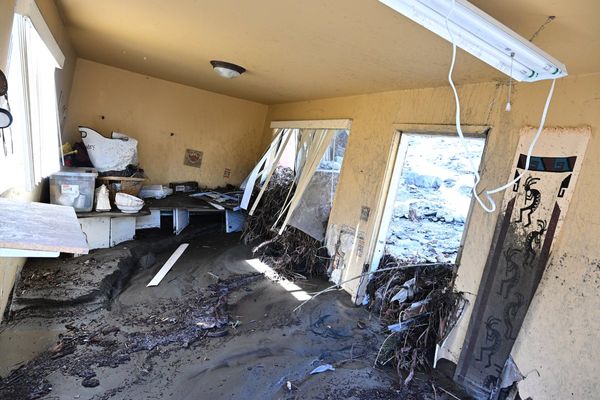The last section of the Jobs+Skills Summit Issues Paper argues, quite correctly, that maximising the opportunities from new, growing and strategically important industries will be critical to boosting productivity, sustaining full employment, and ensuring our cities and regions thrive.
“Building a more agile, diverse, and skilled labour force will also be critical in an era of rapid structural change,” it says.
It follows that in thinking about jobs and skills, we must also address the issue of how growing industries can attract and nurture the talent – the capacities and abilities of people – who will conduct and deliver world-class research in Australia.
In the academic world, we can think of a talent pathway that starts with nurturing interest among the broader community and works its way through primary and secondary education, tertiary education (higher education and VET), research training via a PhD, a postdoctoral appointment, an early career research position, then climbing the academic ladder to become an eminent scientist working on “new to the world” innovations.
Young aspiring academics struggle to make a career out of research. Moreover, the pathway to eminence depends on a capacity to generate research income through government competitive grant schemes and from industry, to build research teams, and develop strong trust-based relationships within a research organisation and externally with government and industry.

This is by no means an easy task, and while there is government and institutional support on some sections of the pathway, it is absent in many others.
Capable research students in many STEM areas receive multiple job offers after and even before completing their undergraduate studies. It is too much for many to consider forgoing income for at least another three years to complete a PhD.
Businesses seeking talent are offering an increasing number of final-year undergraduate scholarships and internships. In Agriculture, for example, it is said that there are four jobs available for each graduating student.
The Ministers for Education, Health, Agriculture and Climate Change, Energy the Environment and Water, have responsibilities for research investment—either directly through their departments, or through the research investment councils within their portfolios. But are their investment strategies doing enough to stimulate, develop and maintain the research workforce pathway?
According to Education department data, in 2020, there were 269,713 domestic students studying STEM programs (not including Health) at Australian Universities. Of these, 5 per cent were undertaking a doctorate by research (mainly a PhD), 22 per cent doing a bachelor’s honours, and 56 per cent, a bachelor’s pass. Also, in 2020 there were 171,559 international students studying STEM programs in Australia, 8 per cent of whom were undertaking PhDs.
International PhD numbers were significantly higher than domestic student numbers in the strategically significant areas of information technology and engineering and related technologies. The number of domestic students undertaking a STEM PhD has been falling since 2017.
There is an important issue here about the extent to which Australia can continue to rely on international PhD students to underpin its research capability in the new and growing industries that will be built around physics, engineering and technology and contribute to Australia’s overall R&D performance. There are also national security issues at play here too.
Under the Department of Education Research Training Program (RTP) PhD students may receive a scholarship to offset tuition fees, pay a stipend for general living costs, and an allowance for ancillary costs associated with completing the degree. In 2022 the full-time base RTP is $28,854. The minimum wage is $42,246.
In recent months several opinion pieces have pointed to the challenges of living on an RTP stipend, particularly in locations where rental costs are high or low-cost accommodation is unavailable. Friends and families are often called upon to support living costs. Low SES students can miss out.
Some research organisations provide generous supplements to the RTP stipend. For example, the Grains RDC offers selected students holding an RTP a $30,000 annual scholarship for three years (including $10,000 annually for operating costs) and a once off $5,000 allowance for travel.
These awards have been an important way to address the research pathway in the grains industry – which raises a question about the extent to which other industries could take on this sort of initiative on a collective or collaborative basis.
In the academic world, PhDs are considered to be “research training” – getting people ready for a research career. The next step is generally a post-doctoral role where a researcher has an opportunity to develop independence, hone technical skills and focus research interests.
There is some support for postdoctoral researchers from government research organisations, such as CSIRO and State Agriculture Research Organisations. Postdoctoral awards may be embedded in competitive grants offered by the ARC, NHMRC and other research investing organisations.
Average postdoctoral salaries range from $80,000 to $110,000 plus superannuation. They are, however, very difficult to find. Such awards are generally for three years and can’t be renewed. After that, what happens can be very uncertain.
Successful postdocs may find a fixed-term teaching and research position within a university. Tenure may come after achieving a strong publication and citation profile. Publications and citations largely determine further academic advancement on the pathway to eminence.
Opportunities for research careers are becoming constrained as universities and research organisations introduce fixed-term research positions and rely on a very broad range of 3 to 5 year specific purpose/categorical grants from competitive government funding programs to support research institutes and centres.
Without a continuous stream of external funding, research institutes are rarely sustainable over the longer term. Medical Research Institutes provide an important benchmark.
Many research graduates seek to continue their careers in industry. But this pathway is even more constrained as large Australian and multinational businesses cut back their R&D commitment.
Telstra and BHP, for example, once had very large research laboratories, but it was generally lost as shareholder value, privatisation, and outsourcing ideologies took hold in the 1990s. Some of this capability was picked up in universities and public research organisations.
Current ABS data shows Australian business commitment to R&D is at an all-time low—at 0.92 per cent of GDP in 2019-20, down from 1.37 per cent in 2008-09. Much of that is accounted for by a drop in Mining R&D and has not been made up by investments from other industry sectors.
With the fall-off in industry R&D, the ‘receptor’ capacity for PhD graduates in Australian businesses is very thin. Moreover, most of Australia’s largest listed companies are in banking, and retail which do not undertake significant levels of R&D.
On the other hand, several of the largest private companies are in the more knowledge-intensive categories of healthcare and professional and engineering services, where research opportunities may be greater.
For many businesses their commitment to R&D is associated with hiring first degree STEM graduates to apply knowledge acquired through learning rather than through undertaking research.
This is particularly the case with innovative medium size businesses (MSBs) in engineering and technology. On the brighter side, MSBs are becoming increasingly engaged with Cooperative Research Centres through various forms of membership arrangements.
Businesses often resist hiring PhDs due to their lack of soft skills in communication, language and culture and a capacity to work in teams and develop relationships and trust within a business and externally. Several universities are addressing this with courses directed at building and developing soft skills in their PhD programs.
The ARC Industry Fellowships Scheme, being introduced as part of the previous government’s Commercialisation Action Plan, will fund 1800 university, CSIRO, and industry-led PhDs and fellowships in industry focussed disciplines over the next four years.
This will go some way towards encouraging business commitment to R&D, including employment of PhD graduates. Still, it will need to continue over many years to shift the dial.
The capacity to capture opportunities in strategically important industries will be heavily contingent on having a sustainable, domestically oriented R&D workforce with the necessary talent to undertake and deliver world-class research in Australia that will lead to “new to the world” innovation and commercialisation.
Building research capacities, abilities and talent must sit alongside the commitment of universities, VET institutions, and research organisations to increasing the numbers of technically and professionally qualified personnel to manage, operate, and improve, the innovations that have been successfully adopted and applied.
Dr John Howard is a Visiting Professor at UTS Business School and Managing Director of Howard Partners, a specialist public policy advisory firm.
John can be contacted at john@howardpartners.com.au.







